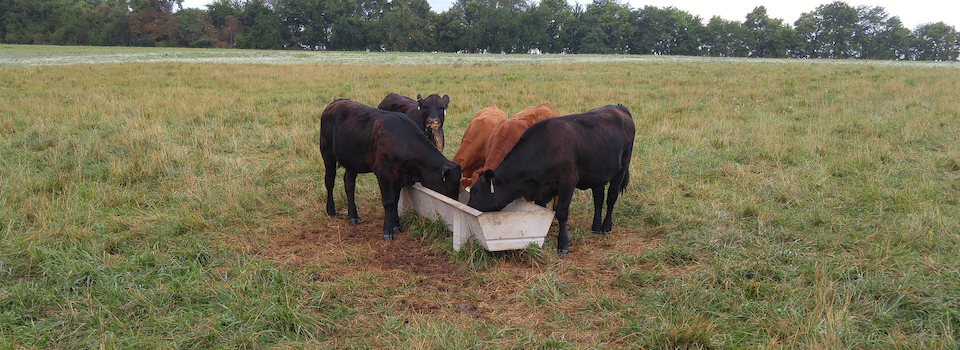
K-State veterinarian Bob Larson says cattle who have consumed ergot fungus found in rye grain may present similar symptoms to fescue toxicosis. | Download photo
Cattle Chat: To feed or not to feed rye grain
K-State cattle experts evaluate rye as a feedstuff for beef animals
At a glance: K-State beef cattle experts received a listener question about rye grain on the most recently released Cattle Chat episode. They examine whether producers should feed whole rye grain to cattle.
More information: Phillip Lancaster, 785-532-6323, palancaster@vet.k-state.edu; Bob Larson, 785-532-4257, rlarson@vet.k-state.edu; Brad White, 785-532-4243, bwhite@vet.k-state.edu
Related: Beef Cattle Institute Cattle Chat
August 20, 2024
By Jacob Klaudt, K-State Research and Extension news service
MANHATTAN, Kan. – Cereal rye grain possesses many uses within crop and livestock production. Growers make rye part of their corn-soybean crop rotation to boost yields, while ranchers needing an alternative feed might hay it for their livestock.
Recently, a listener who plants rye as a cover crop asked the hosts of K-State’s Cattle Chat podcast if rye grain can be included in cattle rations. Kansas State University beef cattle nutritionist Phillip Lancaster said “yes,” noting it depends on the class of cattle.
“Cattle can have rye grain in their diets,” he said. “It is nutritionally similar to other cereal grains like oats and barley, with a higher fiber content than wheat.”
Producers often plant rye for its cold tolerance and relatively low soil and moisture requirements. Lancaster said an after-harvest benefit includes rye grain’s ability to replace corn (one of the more expensive feedstuffs) in certain cattle diets.
“There is a study that looked at growing cattle on rye instead of corn as a grain source and those researchers saw no difference in cattle performance,” he said.
“Whether it is growing replacement heifers or backgrounding feeder cattle, I think a producer could pretty much substitute all of the corn in a diet with whole rye grain.”
On the other hand, producers may not want to feed rye grain to cattle in the finishing phase of the feeding period.
“Another part of that research evaluated finishing cattle on rye grain rather than corn,” Lancaster said. “Overall, the cattle that had rye grain in their diet had a lower dry matter intake, their average daily gain was lower and feed conversion was worse.”
Producers who elect to feed rye grain do not need to have it processed before feeding, according to Lancaster.
“The same study assessed hammer milling rye versus feeding it whole. Processing did not seem to improve cattle performance, so I do not think producers need to spend the money to have it milled,” he said.
Additionally, producers should scout the rye seed heads in a field prior to feeding, K-State veterinarian Bob Larson said, to avoid health problems caused by ergot fungus.
“Rye is at a bigger risk for ergot fungus than other cereal grains,” he said. “It can be quite damaging to animals that consume it. The arteries in their body constrict, and the blood flow to their tails and feet can be restricted to a degree where they are damaged and may even fall off.”
“Go out and walk through that field you are planning on feeding rye from and look at the seed heads. The fungus is a little bigger than a rye seed and will be a dark black or brown.”
Larson said even if only a portion of a field has ergot fungus, a producer should not feed any grain from that crop to livestock.
K-State veterinarian Brad White wrapped up the conversation, saying: “I think with that caution (regarding ergot toxicity) in mind – and depending on the kind of cattle you are feeding – rye can certainly be a component of a ration.”
To hear the full discussion, listen to Cattle Chat on your preferred streaming platform.
***

K‑State Research and Extension is a short name for the Kansas State University Agricultural Experiment Station and Cooperative Extension Service, a program designed to generate and distribute useful knowledge for the well‑being of Kansans. Supported by county, state, federal and private funds, the program has county extension offices, experiment fields, area extension offices and regional research centers statewide. Its headquarters is on the K‑State campus in Manhattan. For more information, visit www.ksre.ksu.edu. K-State Research and Extension is an equal opportunity provider and employer.